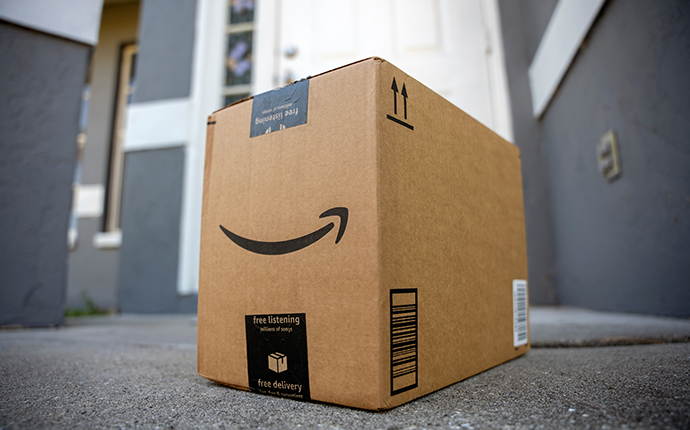What Is a Parcel Contract?
A parcel contract is a written agreement between businesses and shipping carriers that defines specific rates, surcharges, and conditions of small parcel shipping.
Shipping a small package is simple. You can take the package to the post office and fill out a packing slip, print the label, pay the fee, and the package will be delivered to its destination. In contrast, when you ship hundreds or even thousands of parcels daily, your costs add up quickly, along with the work needed to process the large shipping volume.
Parcel carriers enable you to fulfill a large number of orders while keeping shipping costs low. However, price hikes, surcharges, accessorials, and zone fees can significantly increase shipping costs. For this reason, businesses can choose to do small parcel contract negotiations to negotiate special rates with your carriers.
In this article, we discuss the best practices you should follow during the contract negotiation process to get the most out of your parcel agreement.
Carrier Contracts vs. Parcel Contracts vs. Shipping Contracts
You need different types of transportation to procure raw materials from a supplier, deliver to the customers’ doorsteps, and move freight orders to wholesale buyers. As a result, you probably have many contract types in place to transport your goods. These contracts outline the relationship between you and your shipping company. Let’s define some of the most common types of contracts used by businesses to move their goods:
- Carrier contract: A carrier contract defines the terms and prices you’ll adhere to when shipping goods over the time period outlined in the contract. Carrier pricing and terms significantly affect your company’s bottom line because they determine how the carrier will deliver your shipments to their destinations and at what cost.
- Parcel contract: A parcel contract is a written agreement between a shipper carrier and a business that defines the terms and conditions, rates, and conditions of small parcel shipping. Small parcel shipments are individual packages weighing under 70 lbs and are shipped in your own packaging or boxes provided by the carrier. They don’t require pallets and are often transported through a small parcel shipping system.
- Shipping contract: A shipping contract is a binding legal document between a shipping carrier and a shipper that allocates the risk of loss between parties in case of theft, damage, loss of cargo, or force majeure from pick-up points to delivery points. These contracts also outline terms and conditions relating to invoices, bill of lading, shipping receipts, and other agreements between the shipper and the carrier.
While the three contract terms are used interchangeably, they serve different purposes. Parcel contracts usually deal with individual lightweight packages, carrier contracts mostly relate to freight (LTL and FTL) shipping, and shipping contracts are used to facilitate the regular transportation of large shipments through railways, trucks, and ships.
Some carriers like FedEx and UPS handle most types of goods transport, from small parcel delivery to managing supply chain operations for businesses.
Features to Focus On in Parcel Contract Negotiations
A parcel contract will typically include the following:
- Tiers: Shipping carriers offer different pricing tiers for their customers. This enables shippers to save money if they meet certain shipping volume or revenue requirements. In addition, you can negotiate how much usage-based pricing impacts your discounts.
- Minimum spend: Minimum spend is the minimum net fee charged on all packages regardless of the discount rate. Package minimum can override negotiated discounts if it exceeds the discount rate. Therefore, it is essential to negotiate lower package minimums to maximize your discounts.
- Surcharges: All carriers have shipping surcharges, but you can negotiate lower rates by leveraging carriers competing against each other. For example, you can negotiate a flat rate for residential delivery surcharges, ask for lower rates if you increase the shipping volume of oversized packages, etc.
- DIM pricing: DIM weight pricing determines your shipping cost by comparing a package’s volumetric weight with its own. As a result, you have to pay for the higher between the two values. As with anything else, you can work around this cost by negotiating a flat rate and working with a carrier that doesn’t use DIM pricing.
- Bundling: In addition to parcel delivery, some logistics companies offer different types of fulfillment services, such as procuring raw materials, warehousing, distribution, and import documentation. Bundling logistics services enables shippers to have a single contract for managing their logistics operations while enabling them to get better pricing by negotiating volume discounts.
- Refunds: Major carriers offer a money-back guarantee for on-time deliveries and provide refunds if they fail to meet their promises. Similarly, you can obtain refunds on shipping fees when packages are lost, damaged, or incorrectly charged.
Carriers may ask you to sign away your right to these refunds in exchange for rebates. Keeping your right to a full refund is essential to recover lost revenue due to service failures, but it also helps you hold carriers accountable for their performance. - Termination clauses: This clause defines the terms and conditions under which each party can terminate the contract. Shippers can be penalized for missing shipping volume requirements agreed upon with their carrier. Make sure that your contract gives you room to renegotiate rates and switch carriers, considering each year carriers increase shipping rates.
7 Best Practices for Parcel Contract Negotiations
Here are some of the techniques that are sure to enhance your experience of negotiating parcel contracts.
1. Understand Your Current Contract Thoroughly
Before initiating parcel contract negotiations with carriers, you must thoroughly review your current carrier agreement.
It contains essential details about your contract term, rates, insurance, cargo liability, indemnification, and termination clauses. Make sure that you breach any condition that results in damage claims. For example, FedEx and UPS contracts have early termination clauses that penalize shippers for diverting shipping volume and falling below contractually pre-set levels.
Read the fine print of your carrier contract, as it can help you better understand your past parcel spend and shipping volume. Similarly, closely examine your pricing agreements to uncover any cost reduction opportunities.
Sifted’s rate analysis feature helps you understand the impact of carrier rate changes on your business so you can take the necessary steps to reduce shipping costs.
2. Get Assistance for Any Misunderstandings
While parcel carriers update their prices every year, most shippers don’t review their contracts to account for these changes. In doing so, they expose their business to future surprises. Therefore, it is essential to have clarity about what contract terms and rates impact your operations.
Shipping professionals can help you gauge the services you are receiving from your carrier and identify the terms you need to go into your contract negotiation.
Consult with a shipping solution that deals with a wide range of shippers to find out if you could get better service, negotiate accessorial fee waivers, and receive discounts and incentives.
3. Run a Full Shipping Audit
Don’t rush to the negotiating table until you are confident that you’ve uncovered all areas of potential cost savings.
Parcel auditing can help you identify unnecessary costs and give you better visibility into your shipping operations. This includes both carrier invoice and contract auditing.
Invoice auditing uncovers areas for refunds for things like overcharges, lost or damaged packages, late deliveries, and service failures. Your auditors can use this information to gauge contract compliance by your carrier and recover lost revenue through refunds.
4. Check Out the Competition
Shippers have to continually face challenges in the form of shipping rate hikes, capacity constraints, late deliveries, and service guarantee suspensions. However, there are multiple alternatives available to you at any time. Take the time to explore alternatives to your existing shipping providers.
When you know what competitors offer, you’ll be in a better position to figure out where you deserve a better rate or service.
A shipping intelligence service can help you benchmark shipping companies against their peers. It uses your past shipping data and advanced analytics tools to identify ways to draw down your shipping spend.
Sifted’s contract optimization enables you to compare carrier rates across service types, transit times, package count, and average cost per pound. Then you can determine how much room is available to maneuver when negotiating with an existing or new carrier.
5. Keep Positive Relationships
Strong carrier relationships are vital to achieving long-term success as a shipper. You need to negotiate favorable contracts while maintaining and strengthening your partnership.
Successful negotiators understand the implications of contract terms and rely on thorough research and shipping data to back up any claims.
Reducing shipping costs and improving your bottom line could be your end goal, but spoiling a relationship with a long-standing partner can become a bigger problem in the future. Therefore, at the negotiation table, ask questions, then listen carefully. Even if you have decided on target rates and identified several alternatives, you should keep your mind open to assess your carrier’s interests.
6. Don’t Stop at Price Alone
Never enter a carrier contract negotiation solely focusing on getting lower shipping rates. Most carriers know more about a shipper’s data than the shipper. To receive the best outcomes, you must fully grasp a clear understanding of your shipping profile that includes your:
- Carrier rates
- Discounts and incentives
- Service levels
- Shipping volume (regular vs. peak season)
- Surcharges and accessorials
- Shipping zones
- Package weight (actual vs. dimensional weight)
- Pickup and delivery locations (residential vs. commercial locations)
Here are a few questions to ask yourself as you prepare for your upcoming negotiations:
- Has my shipping profile changed from last year to this year?
- How much has the General Rate Increase (GRI) impacted your forecasted budget?
- Does my shipping volume often hit my tiers?
- What portion of my shipments are subjected to surcharges, accessorials, dimensional pricing, etc.?
- LTL vs. FTL: Which shipping method is best for my supply chain?
This information will help you negotiate and renegotiate the terms of your shipping contract.
You can even use our DIM weight calculator to compare the billable weight between FedEx, UPS, and USPS.
7. Get Recommendations
UPS, FedEx, USPS, and DHL are all common carriers most shippers use. But it’s wise to explore if other trusted local carriers offer discounted shipping services. You can utilize your network connections to conduct background checks on carriers and read user reviews online to find out which carriers have a good track record of delivering orders without issues. Alternatively, you can work with a logistics management service to find the right carrier based on your specific needs.
Secure the Best Rates with Sifted
Carrier relationships are the backbone of your shipping operations. However, the complexity of parcel contracts and published pricing makes it difficult for shippers to secure the best possible rates. A shipping management solution can help you compare and monitor contracts and optimize them based on your company’s unique shipping needs and characteristics.
Sifted Logistics Intelligence solution gives you a complete view of your shipping profile, so you know exactly which areas need your immediate attention. It helps you keep track of volume-based pricing penalties and protects you from missing or exceeding negotiated tiers.
Get the best deal in a parcel contract negotiation. Get a free demo from Sifted!
FAQs
Q: Can businesses negotiate for customized terms in parcel contracts beyond the general features mentioned in the article, such as tiers, minimum spend, surcharges, DIM pricing, bundling, refunds, and termination clauses?
A: Yes, businesses can negotiate for customized terms in parcel contracts beyond the general features mentioned in the article. Depending on their specific shipping needs and priorities, businesses may seek to negotiate terms related to service levels, delivery guarantees, specialized handling requirements, packaging preferences, insurance coverage, and additional value-added services. These negotiations can vary significantly based on factors such as shipping volume, industry sector, geographic coverage, and the competitive landscape among shipping carriers.
Q: What are some common challenges or pitfalls businesses might encounter during parcel contract negotiations, and what strategies can they employ to overcome them effectively?
A: Common challenges during parcel contract negotiations include complex pricing structures, discount comprehension, service quality concerns, and managing multiple carriers. Businesses can overcome these challenges by conducting thorough contract reviews, utilizing shipping data for negotiation, seeking expert assistance, benchmarking rates, maintaining positive carrier relationships, and staying informed about industry trends and technologies to adapt negotiation strategies effectively.
Q: Are there any specific legal considerations or regulatory requirements that businesses need to be aware of when entering into parcel contracts with carriers, particularly concerning liability, insurance, or dispute resolution?
A: Legal considerations in parcel contract negotiations may vary depending on the jurisdiction and the nature of the goods being shipped. Businesses should be aware of laws governing contract formation, liability allocation, insurance requirements, and dispute resolution mechanisms. It’s essential to thoroughly review and understand the terms and conditions outlined in the contract, particularly those related to indemnification, limitation of liability, and jurisdictional clauses. Consulting with legal professionals experienced in transportation law can help ensure compliance and mitigate risks.











